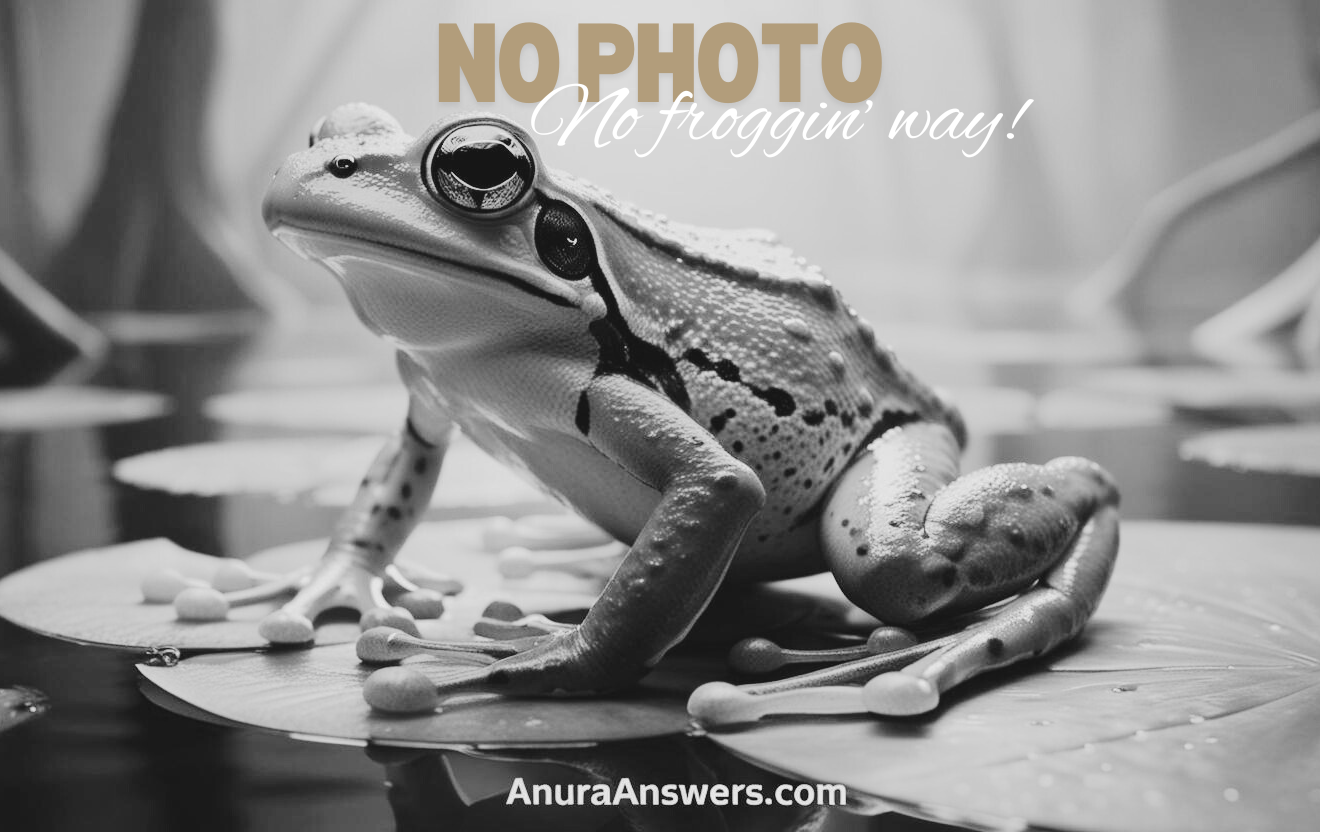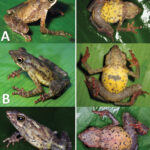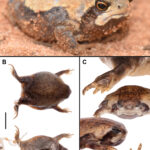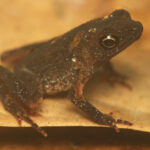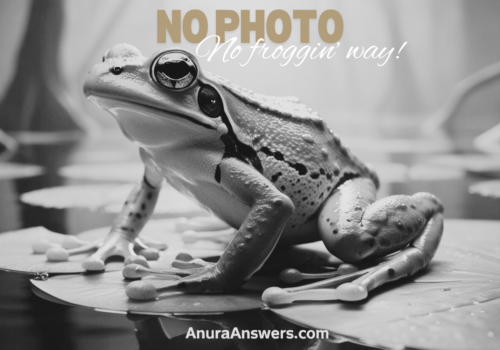- Introduction: Meet Atelopus mittermeieri, the Jewel of the Rainforest
- Taxonomy and Classification: Understanding the Harlequin Frog's Lineage
- Natural Habitat: A World beneath the Emerald Canopy
- Physical Characteristics: Beauty in Bold Warning Colors
- Behavior and Life Cycle: Secrets of Survival
- Ecological Role: A Sentinel for Ecosystem Health
- Threats and Conservation Status: Challenges for Survival
- Cultural and Scientific Significance: Appreciating Mittermeier's Harlequin Frog
- Conclusion: Protecting this Precious Jewel
Introduction: Meet Atelopus mittermeieri, the Jewel of the Rainforest#
Hidden amidst the verdant, misty rainforests of northern Peru lives a tiny, striking creature whose existence has largely escaped mainstream attention. Atelopus mittermeieri, commonly known as Mittermeier’s Harlequin Frog, embodies the beauty, fragility, and alarming plight seen in countless amphibian species worldwide. With vibrant coloration, delicate stature, and a story deeply interwoven with its threatened environment, this small amphibian serves as an indicator of the health of the ecosystem where it thrives—or struggles to survive.
Named to honor renowned conservationist Russell A. Mittermeier, this remarkable frog illustrates the complexity and wonder of biodiversity, while also silently raising an alarm over humankind’s profound impact on nature. But what exactly makes Atelopus mittermeieri so fascinating, so worthy of study and preservation? Join us on an immersive journey to unravel the captivating natural history, ecological richness, and critical conservation issues surrounding this amazing species.
Taxonomy and Classification: Understanding the Harlequin Frog’s Lineage#
Atelopus mittermeieri belongs to the Bufonidae family, widely recognized as the “true toads,” a large and diverse group known for their fascinating biological traits and adaptation strategies. Within the family Bufonidae sits the genus Atelopus, home to brightly colored frogs—often vividly patterned—collectively called “harlequin frogs.”
Distinguished by bold coloration patterns, Atelopus frogs are well-loved by herpetologists and wildlife enthusiasts alike. In fact, the genus Atelopus consists of around a hundred fascinating yet endangered species distributed primarily along the mountainous and forested regions of Central and South America. The presence of strong toxins as defense mechanisms and their association with pristine habitats make Atelopus species reliable indicators of environmental health, helping scientists respond quickly to ecosystem disturbances such as pollution and microclimate changes.
Atelopus mittermeieri was formally described and scientifically named in 2006 by researchers Edgar Lehr and Alessandro Catenazzi, who recognized its distinct traits, habitat, and ecology. Closely related to other Atelopus species such as Atelopus patazensis and Atelopus patazensis, Mittermeier’s Harlequin Frog is distinguished by its highly particular geographic range and subtle yet discernible differences in coloration and morphology.
Natural Habitat: A World beneath the Emerald Canopy#
The forests of northern Peru provide the lush backdrop for Atelopus mittermeieri’s existence. This vulnerable little amphibian holds strong habitat specificity, predominantly calling home the humid montane forest slopes and fast-flowing mountain streams of the Andes foothills. Within this niche, the harlequin frog’s presence symbolizes a clean and well-balanced environment, illustrating its role as one of nature’s best bioindicators.
Geographic Range and Specific Habitat Preferences#
Atelopus mittermeieri is currently known exclusively from a small, precise locality in the Cordillera Central region, near the Río Abiseo National Park and surrounding protected areas—regions celebrated for their impressive biological richness. This limited range points to both specialized habitat requirements and vulnerability to environmental change.
Specifically, the habitat preferred by this elusive amphibian includes mossy, wet rocks near streams, riverbanks, and shaded forest slopes with abundant leaf litter. They depend on clean, flowing water for breeding, laying eggs in safe shallows or streamside pools, where tadpoles mature hidden among aquatic vegetation and organic debris.
The verdancy of their habitat, perpetually shrouded in mist and cooled by high humidity, supports their amphibious lifestyle, helping maintain skin moisture crucial for respiration and hydration. The complex vegetation structure of their habitat provides shelter from predators and reduced exposure to direct sunlight, making these shaded enclaves vitally important for their day-to-day existence.
Physical Characteristics: Beauty in Bold Warning Colors#
Upon encountering Atelopus mittermeieri, one is immediately captivated by its vivid coloration and striking pattern. At just around 30 millimeters in length, this frog may fit neatly upon a fingertip, but its small stature belies bold confidence displayed through its bright yellow-green dorsal coloration, mottled with black streaks and bands, a warning of its potent toxicity.
The conspicuous coloration serves not only as biological adornment but as a critical defense strategy termed “aposematic coloration,” alerting potential predators to its toxic nature. The skin secretes alkaloid toxins as a powerful deterrent, making the frog dangerous to ingest and ensuring safety from many natural predators.
The slender legs, slightly webbed toes, and small suction pads allow these frogs to navigate their moist homeland, gliding deftly over slippery rocks and vegetation, rarely venturing far from life-giving waters. Its large and expressive eyes, combined with smooth but vibrant skin, make Atelopus mittermeieri visually stunning—one of nature’s little masterpieces.
Behavior and Life Cycle: Secrets of Survival#
As primarily diurnal creatures, Atelopus mittermeieri actively explores its habitat during daylight hours. Their mornings are often marked by the calls of males, which perch strategically near streams, issuing soft yet persistent vocalizations that echo gently through the forest—an orchestrated musical invitation critical to attracting mates.
Feeding and Dietary Patterns#
The harlequin frog thrives on a diet rich in arthropods, primarily ants, beetles, and small insects moving along the moist litter and moss-covered rocks. An opportunistic feeder, Atelopus mittermeieri employs patient ambush-style predation—sitting inconspicuously until prey stumbles into proximity, upon which the frog quickly uses its adhesive tongue to apprehend food efficiently.
Reproduction and Parental Care#
During breeding season, male frogs congregate near water bodies, vocalizing to signal dominance and attract receptive females. Courtship rituals involve intricate behavioral sequences and vocal interplay. Females deposit gelatinous egg clutches in protected shallow aquatic environments, and subsequent tadpoles enter an aquatic life phase, gradually undergoing metamorphosis into terrestrial juveniles. This transformation period, vulnerable yet integral, symbolizes the delicate balance these frogs must maintain between terrestrial and aquatic habitats, each a critical link for successful reproduction and species longevity.
Ecological Role: A Sentinel for Ecosystem Health#
Like many amphibians, Atelopus mittermeieri holds a dual role within the complexity of ecological networks. Acting simultaneously as predator and as prey, it participates in maintaining balanced food webs in its Andean forest habitat. Its toxin-producing nature, tightly linked to dietary sources, positions it uniquely within the ecosystem, indirectly regulating insect populations and serving as a crucial food item for specially adapted predators resistant to its toxins.
Moreover, as an indicator species, the survival rate and overall health of Atelopus mittermeieri reflect directly on the environment’s overall quality, offering scientists invaluable ecological data.
Threats and Conservation Status: Challenges for Survival#
Sadly, Atelopus mittermeieri faces alarming threats, mirroring regional patterns of decline among amphibians. Worsening habitat degradation due to deforestation, agriculture expansion, pesticide contamination, mining operations, and illegal land encroachment directly impact their fragile habitats.
The aggressive spread of the deadly chytrid fungus Batrachochytrium dendrobatidis exacerbates the challenge. Rapid amphibian declines, widely documented globally, also pose substantial risk locally. Although IUCN formally classifies Atelopus mittermeieri as Critically Endangered, the true scope of threats frequently surpasses documented records.
Cultural and Scientific Significance: Appreciating Mittermeier’s Harlequin Frog#
While direct cultural connections to Atelopus mittermeieri remain limited owing to their secretive nature, historical indigenous cultures of Peru attribute important symbolic meanings to amphibians, often regarding them as guardians or spiritual messengers. Scientifically, this species has awakened broader interest among herpetologists, driving crucial research into habitat conservation, disease mitigation, and ecosystem sustainability.
Conclusion: Protecting this Precious Jewel#
The plight of Atelopus mittermeieri mirrors broader amphibian conservation crises worldwide. Now more than ever, raising awareness, funding research, and actively engaging in conservation programs to safeguard remaining habitats becomes vital. Protecting Atelopus mittermeieri also safeguards the integrity of the larger ecosystems it inhabits.
By sharing its story, appreciating its intrinsic beauty and understanding its ecological responsibilities, each one of us can help amplify efforts to conserve not merely one small frog species—but indeed the wondrous natural world it represents.
